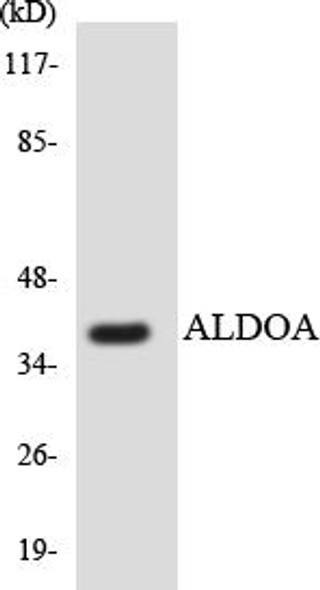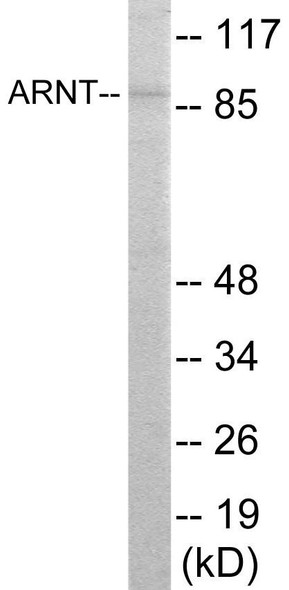Cell Biology
Clock Colorimetric Cell-Based ELISA
- SKU:
- CBCAB00931
- Product Type:
- ELISA Kit
- ELISA Type:
- Cell Based
- Research Area:
- Cell Biology
- Reactivity:
- Human
- Reactivity:
- Mouse
- Reactivity:
- Rat
- Detection Method:
- Colorimetric
Description
| Product Name: | Clock Colorimetric Cell-Based ELISA |
| Product Code: | CBCAB00931 |
| ELISA Type: | Cell-Based |
| Target: | Clock |
| Reactivity: | Human, Mouse, Rat |
| Dynamic Range: | > 5000 Cells |
| Detection Method: | Colorimetric 450 nmStorage/Stability:4°C/6 Months |
| Format: | 96-Well Microplate |
The Clock Colorimetric Cell-Based ELISA Kit is a convenient, lysate-free, high throughput and sensitive assay kit that can detect Clock protein expression profile in cells. The kit can be used for measuring the relative amounts of Clock in cultured cells as well as screening for the effects that various treatments, inhibitors (ie siRNA or chemicals), or activators have on Clock.
Qualitative determination of Clock concentration is achieved by an indirect ELISA format. In essence, Clock is captured by Clock-specific primary antibodies while the HRP-conjugated secondary antibodies bind the Fc region of the primary antibody. Through this binding, the HRP enzyme conjugated to the secondary antibody can catalyze a colorimetric reaction upon substrate addition. Due to the qualitative nature of the Cell-Based ELISA, multiple normalization methods are needed:
| 1. | A monoclonal antibody specific for human GAPDH is included to serve as an internal positive control in normalizing the target absorbance values. |
| 2. | Following the colorimetric measurement of HRP activity via substrate addition, the Crystal Violet whole-cell staining method may be used to determine cell density. After staining, the results can be analysed by normalizing the absorbance values to cell amounts, by which the plating difference can be adjusted. |
| Database Information: | Gene ID: 9575, UniProt ID: O15516, OMIM: 601851, Unigene: Hs.436975 |
| Gene Symbol: | CLOCK |
| Sub Type: | None |
| UniProt Protein Function: | CLOCK: ARNTL/2-CLOCK heterodimers activate E-box element (3'- CACGTG-5') transcription of a number of proteins of the circadian clock. Activates transcription of PER1 and PER2. This transcription is inhibited in a feedback loop by PER and CRY proteins. Has intrinsic histone acetyltransferase activity and this enzymatic function contributes to chromatin-remodeling events implicated in circadian control of gene expression. Acetylates primarily histones H3 and H4. Acetylates also a non-histone substrate: ARNTL. Plays a role in DNA damage response (DDR) signaling during the S phase. Component of the circadian clock oscillator which includes the CRY proteins, CLOCK or NPAS2, ARNTL or ARNTL2, CSNK1D and/or CSNK1E, TIMELESS and the PER proteins. Efficient DNA binding requires dimerization with another bHLH protein. Heterodimerization with ARNTL is required for E-box-dependent transactivation, for CLOCK nuclear translocation and degradation, and, for phosphorylation of both CLOCK and ARNTL. Interaction with PER and CRY proteins requires translocation to the nucleus. Interaction of the CLOCK-ARNTL heterodimer with PER or CRY inhibits transcription activation. Binds weakly ARNTL and ARNTL2 to form heterodimers which bind poorly to the E-box motif. Expressed in all tissues examined including spleen, thymus, prostate, testis, ovary, small intestine, colon, leukocytes, heart, brain, placenta, lung, liver, skeletal muscle, kidney and pancreas. Highest levels in testis and skeletal muscle. Low levels in thymus, lung and liver. Expressed in all brain regions with highest levels in cerebellum. Highly expressed in the suprachiasmatic nucleus (SCN). |
| UniProt Protein Details: | Protein type:EC 2.3.1.48; DNA-binding; Acetyltransferase; Transcription factor Chromosomal Location of Human Ortholog: 4q12 Cellular Component: chromosome; intracellular membrane-bound organelle; nucleoplasm; nucleus; transcription factor complex Molecular Function:chromatin DNA binding; DNA binding; histone acetyltransferase activity; protein binding; sequence-specific DNA binding; transcription factor activity Biological Process: activation of NF-kappaB transcription factor; circadian regulation of gene expression; circadian rhythm; DNA damage checkpoint; negative regulation of transcription, DNA-dependent; photoperiodism; positive regulation of transcription from RNA polymerase II promoter; positive regulation of transcription, DNA-dependent; proteasomal ubiquitin-dependent protein catabolic process; regulation of hair cycle; regulation of insulin secretion; regulation of transcription from RNA polymerase II promoter; regulation of transcription, DNA-dependent; response to redox state; signal transduction; spermatogenesis |
| NCBI Summary: | The protein encoded by this gene plays a central role in the regulation of circadian rhythms. The protein encodes a transcription factor of the basic helix-loop-helix (bHLH) family and contains DNA binding histone acetyltransferase activity. The encoded protein forms a heterodimer with ARNTL (BMAL1) that binds E-box enhancer elements upstream of Period (PER1, PER2, PER3) and Cryptochrome (CRY1, CRY2) genes and activates transcription of these genes. PER and CRY proteins heterodimerize and repress their own transcription by interacting in a feedback loop with CLOCK/ARNTL complexes. Polymorphisms in this gene may be associated with behavioral changes in certain populations and with obesity and metabolic syndrome. Alternative splicing results in multiple transcript variants. [provided by RefSeq, Jan 2014] |
| UniProt Code: | O15516 |
| NCBI GenInfo Identifier: | 6166009 |
| NCBI Gene ID: | 9575 |
| NCBI Accession: | O15516.1 |
| UniProt Secondary Accession: | O15516,O14516, Q9UIT8, A0AV01, A2I2N9, |
| UniProt Related Accession: | O15516 |
| Molecular Weight: | 95,304 Da |
| NCBI Full Name: | Circadian locomoter output cycles protein kaput |
| NCBI Synonym Full Names: | clock circadian regulator |
| NCBI Official Symbol: | CLOCK |
| NCBI Official Synonym Symbols: | KAT13D; bHLHe8 |
| NCBI Protein Information: | circadian locomoter output cycles protein kaput |
| UniProt Protein Name: | Circadian locomoter output cycles protein kaput |
| UniProt Synonym Protein Names: | Class E basic helix-loop-helix protein 8; bHLHe8 |
| Protein Family: | Clock-controlled protein |
| UniProt Gene Name: | CLOCK |
| UniProt Entry Name: | CLOCK_HUMAN |
| Component | Quantity |
| 96-Well Cell Culture Clear-Bottom Microplate | 2 plates |
| 10X TBS | 24 mL |
| Quenching Buffer | 24 mL |
| Blocking Buffer | 50 mL |
| 15X Wash Buffer | 50 mL |
| Primary Antibody Diluent | 12 mL |
| 100x Anti-Phospho Target Antibody | 60 µL |
| 100x Anti-Target Antibody | 60 µL |
| Anti-GAPDH Antibody | 60 µL |
| HRP-Conjugated Anti-Rabbit IgG Antibody | 12 mL |
| HRP-Conjugated Anti-Mouse IgG Antibody | 12 mL |
| SDS Solution | 12 mL |
| Stop Solution | 24 mL |
| Ready-to-Use Substrate | 12 mL |
| Crystal Violet Solution | 12 mL |
| Adhesive Plate Seals | 2 seals |
The following materials and/or equipment are NOT provided in this kit but are necessary to successfully conduct the experiment:
- Microplate reader able to measure absorbance at 450 nm and/or 595 nm for Crystal Violet Cell Staining (Optional)
- Micropipettes with capability of measuring volumes ranging from 1 µL to 1 ml
- 37% formaldehyde (Sigma Cat# F-8775) or formaldehyde from other sources
- Squirt bottle, manifold dispenser, multichannel pipette reservoir or automated microplate washer
- Graph paper or computer software capable of generating or displaying logarithmic functions
- Absorbent papers or vacuum aspirator
- Test tubes or microfuge tubes capable of storing ≥1 ml
- Poly-L-Lysine (Sigma Cat# P4832 for suspension cells)
- Orbital shaker (optional)
- Deionized or sterile water
*Note: Protocols are specific to each batch/lot. For the correct instructions please follow the protocol included in your kit.
| Step | Procedure |
| 1. | Seed 200 µL of 20,000 adherent cells in culture medium in each well of a 96-well plate. The plates included in the kit are sterile and treated for cell culture. For suspension cells and loosely attached cells, coat the plates with 100 µL of 10 µg/ml Poly-L-Lysine (not included) to each well of a 96-well plate for 30 minutes at 37°C prior to adding cells. |
| 2. | Incubate the cells for overnight at 37°C, 5% CO2. |
| 3. | Treat the cells as desired. |
| 4. | Remove the cell culture medium and rinse with 200 µL of 1x TBS, twice. |
| 5. | Fix the cells by incubating with 100 µL of Fixing Solution for 20 minutes at room temperature. The 4% formaldehyde is used for adherent cells and 8% formaldehyde is used for suspension cells and loosely attached cells. |
| 6. | Remove the Fixing Solution and wash the plate 3 times with 200 µL 1x Wash Buffer for five minutes each time with gentle shaking on the orbital shaker. The plate can be stored at 4°C for a week. |
| 7. | Add 100 µL of Quenching Buffer and incubate for 20 minutes at room temperature. |
| 8. | Wash the plate 3 times with 1x Wash Buffer for 5 minutes each time. |
| 9. | Add 200 µL of Blocking Buffer and incubate for 1 hour at room temperature. |
| 10. | Wash 3 times with 200 µL of 1x Wash Buffer for 5 minutes each time. |
| 11. | Add 50 µL of 1x primary antibodies (Anti-Clock Antibody and/or Anti-GAPDH Antibody) to the corresponding wells, cover with Parafilm and incubate for 16 hours (overnight) at 4°C. If the target expression is known to be high, incubate for 2 hours at room temperature. |
| 12. | Wash 3 times with 200 µL of 1x Wash Buffer for 5 minutes each time. |
| 13. | Add 50 µL of 1x secondary antibodies (HRP-Conjugated AntiRabbit IgG Antibody or HRP-Conjugated Anti-Mouse IgG Antibody) to corresponding wells and incubate for 1.5 hours at room temperature. |
| 14. | Wash 3 times with 200 µL of 1x Wash Buffer for 5 minutes each time. |
| 15. | Add 50 µL of Ready-to-Use Substrate to each well and incubate for 30 minutes at room temperature in the dark. |
| 16. | Add 50 µL of Stop Solution to each well and read OD at 450 nm immediately using the microplate reader. |
(Additional Crystal Violet staining may be performed if desired – details of this may be found in the kit technical manual.)






